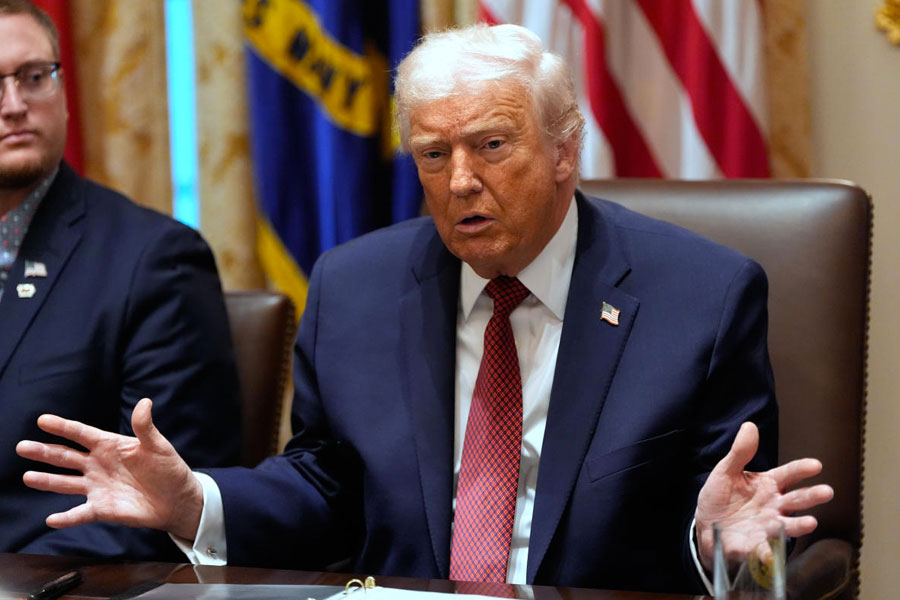The issue of the entry of foreign universities in India has always generated ample debate. Back in 2007, the United Progressive Alliance-I government had introduced a bill in Parliament to regulate the entry and operation of FUs in India. A revised version of this, the foreign educational institutions (regulation of entry and operations) bill, was introduced in 2010 during the UPA-II regime. Although a welcome initiative, the bill was heavy on regulations. Among other provisions, it required FUs to maintain a corpus fund of Rs 50 crore and imposed restrictions on the repatriation of surplus. With the dissolution of the 15th Lok Sabha, however, this bill eventually lapsed. It now appears that in spite of some work by the Niti Aayog and the ministry of human resource development to come up with a newer version of the bill, the idea of allowing FUs to operate in India has effectively been shelved. At present, there are some programmatic collaborations or twinning arrangements (like Virginia Tech’s certificate courses or Duke University’s Bangalore office that focuses on exchange programmes and research collaborations), but FUs operating in India cannot grant degrees.
There are important reasons why we must roll out the red carpet for FUs. To begin with, the presence of FUs will surely have a rub-off effect on Indian universities, many of which are mired in a slothful, inert culture where all aspects of university governance are centralized, standardized, and often politicized. In contrast, good FUs can bring in a culture that prides itself in academic autonomy, little hierarchy, leadership vision, faculty dedication, student engagement, and a focus on competitiveness and innovation. With the higher levels of interpersonal interaction made possible by geographical proximity, FUs in India could provide both a competitive benchmark for academic excellence and an ecosystem for greater collaboration between our researchers and FU faculty members. Foreign students, currently a trickle in Indian universities, could also be attracted if FUs in India can provide quality education at about half the price of an American or European degree. In a few years, India could become a hub of global education, much like Singapore or Hong Kong.
Attracting FUs, however, may not be easy, given the significant operational challenges they are likely to face. These include, inter alia, the possibility of brand dilution, significant upfront investments, incentivizing faculty members to move between international campuses, challenges of finding quality local talent, ensuring an equal commitment to research in the host country campus, and maintaining a cordial relationship with the local government and community. Given these challenges, the FU leadership is likely to set up a foreign campus only when the project promises stable financial returns, and offers scope for market expansion without a potential loss of reputation.
Therefore, FUs should be allowed to charge fees they think appropriate for their courses, and they must also have the leeway to repatriate profits back to their home country, subject to a simple restriction that they set aside a certain percentage of their post-tax profits for scholarships for poorer students, scholarships for doctoral studies, developing their own infrastructure and so on. If the fees are too high, the market will correct that anomaly as potential FU students could also possibly go abroad or opt for private universities in India. In addition, FUs should have academic autonomy. Subject to a few simple regulations, they should be able to independently decide their course content, student admissions policies, faculty matters, granting of degree, and the overall governance structure. For example, FUs may be allowed to introduce US-style tenure, pay differential salaries based on merit and market demand, hire faculty from abroad, and so on.
While our aim will be to attract large research universities, we should not confine ourselves to only those at the very top of the rankings, like Princeton or Massachusetts Institute of Technology. That is because, unlike in India, the variance in academic standards within the United States of America or the United Kingdom university system is much smaller, at least up to a certain ranking. We will, therefore, still benefit if FUs that are a notch or two below the best decide to come. For example, we may not want to turn away an institution like Baylor University, which, although it ranks only in the 600-800 bracket in the Times Higher Education global rankings, is a selective, research-focused university with a long history (established in 1845) and is recognized in its own right. Needless to say, we must at the same time be wary of bogus, profit-seeking institutions (like Tri Valley).
In terms of the General Agreement on Trade in Services framework, FUs could follow a franchising model, or have twinning/articulated/validation arrangements (the latter usually involve studying at both the partner institution and the award-granting FU, and is common in countries like Singapore and Malaysia). It could also involve joint ventures between FUs and local universities, as we find in China. The FUs could also set up permanent campuses in the recipient’s home market. Examples include campuses set up by the University of Nottingham in Malaysia and China, by Monash University in Malaysia and South Africa, by the University of Adelaide in Singapore, and others.
There could be varying degrees of restriction on FU operations, from no regulations at all (as in France) to very high regulations (as in Belgium). Here in India we could follow a moderately liberal model in which FUs must be accredited and assessed or ranked by an independent national-level regulatory body exclusively set up for the regulation of FUs. Once approved for entry by the regulatory body, the Central or state governments, or other higher education regulatory bodies, should not have any other regulatory role. The FU could then negotiate terms with the government of the state where it intends to set up campus.
Instead of having a rigid ranking criterion (for example, ‘only top 500 universities in the Times ranking’), the FU regulatory body should rank applicant universities into three or four categories. This categorization should not only take into account FU reputation and focus, but also consider if the FU is ready to offer subjects and degrees that are not entirely profit-driven (for example, an advanced course in astrophysics or the liberal arts rather than an MBA), whether it is willing to set up campus in a smaller city, and so on. Incentives for the FU can then be determined according to this categorization, which could be re-visited every few years. Incentives may also be complemented with some limited regulatory measures. For example, FUs could be asked to offer liberal scholarships for poor, meritorious students.
One potential concern is that FUs might poach the best faculty members from Indian universities. While this is indeed a concern in the short-term, in the long-run, FUs offering attractive employment terms may position a university teaching job as a desirable career option for young, meritorious students, many of whom are currently unwilling to pursue academics as a career option. The FUs could also help bring back talented NRI faculty members to India. Another concern often raised is that FUs will be elitist institutions whose presence will lead to further commercialization of higher education in India. Here it must be noted that FU or no FU, students from wealthy families have several other options for higher studies both in India and abroad. On the contrary, FUs should be able to provide the much-needed competitive differentiation among Indian universities where standardization is the current norm, which in turn can promote meritocracy and excellence.
Higher education in India faces multiple tensions and contradictions: excellence versus equity, expansion vs quality, public vs private, and so on. The lion’s share of higher education funding is still done by the government. Yet government funds are not unlimited, and FUs could be one of many initiatives that do not require direct funding by the government. More important, the entry of FUs will address policy goals related to quality, internationalization, competitiveness, and innovation. Instead of standardized structures and processes that promote strict hierarchical governance, uniform thinking, low experimentation and a reduced tolerance for diversity, FUs can help develop unique and more localized models of university governance. The national education policy must therefore consider the entry of FUs as an important component of the larger bouquet of reforms in the higher education sector in India.
The author is a faculty member at IIM Calcutta











